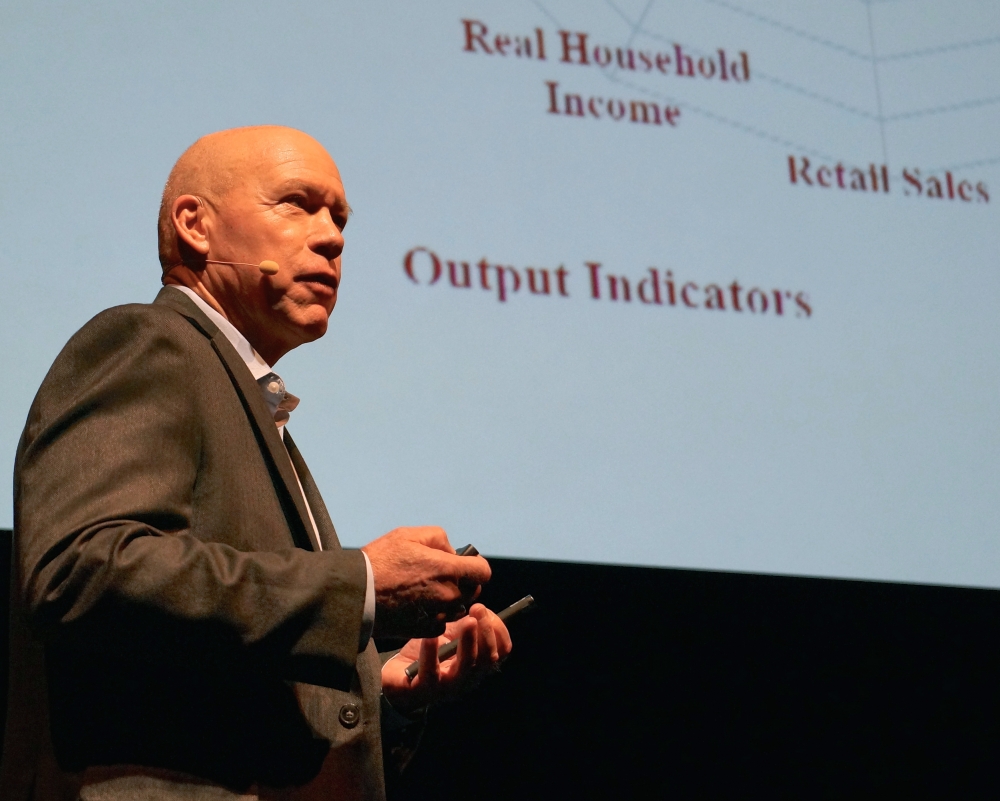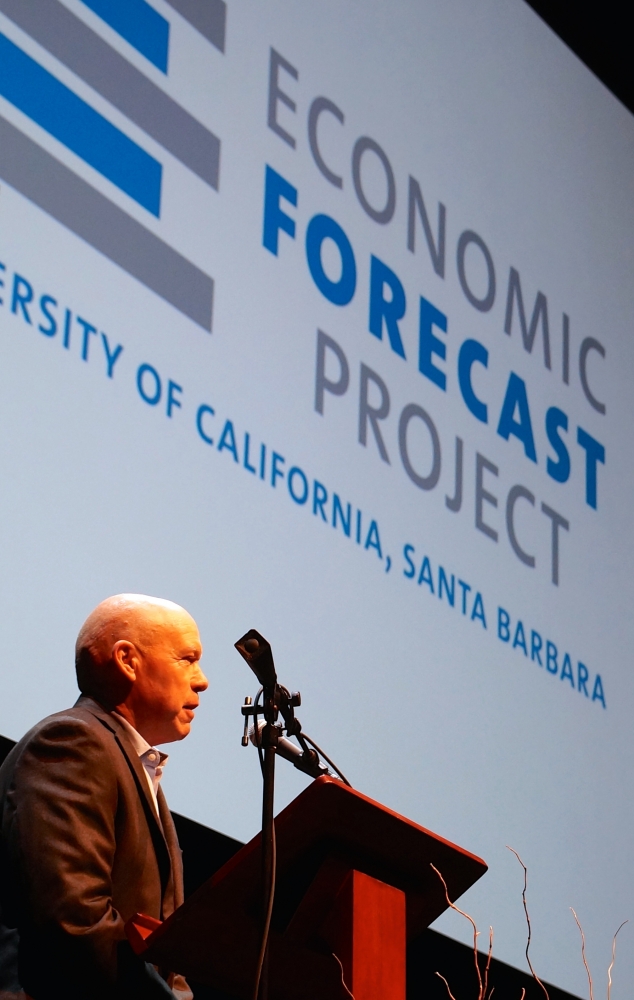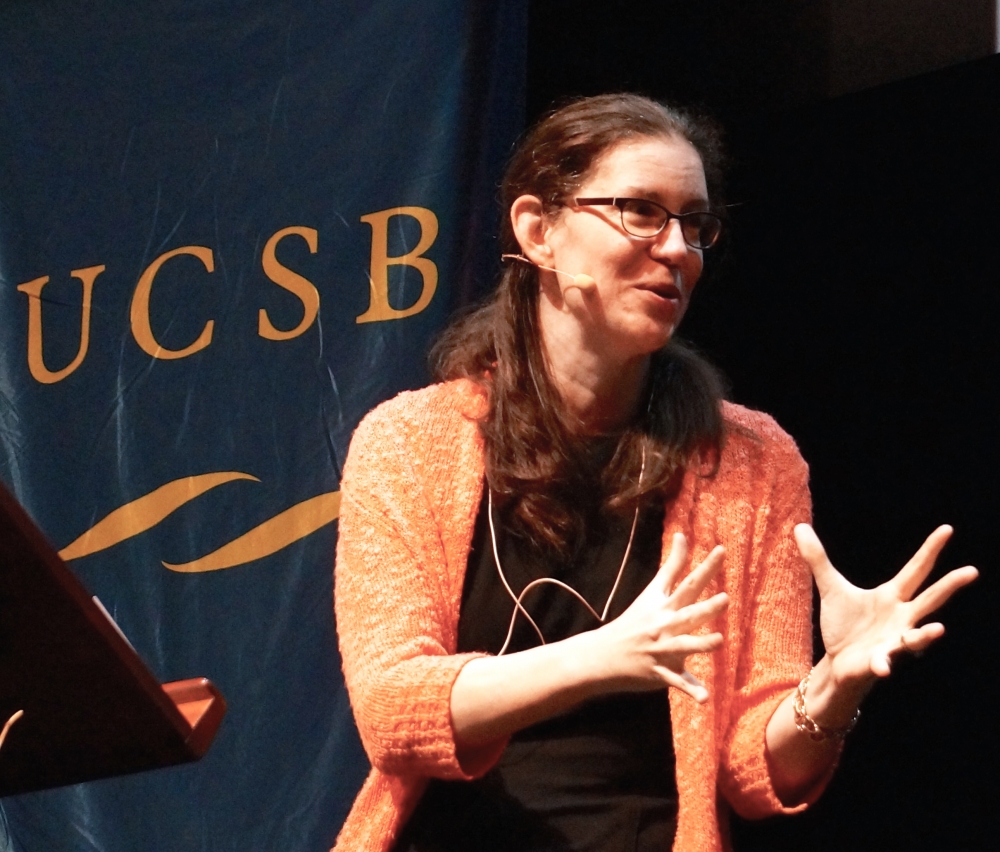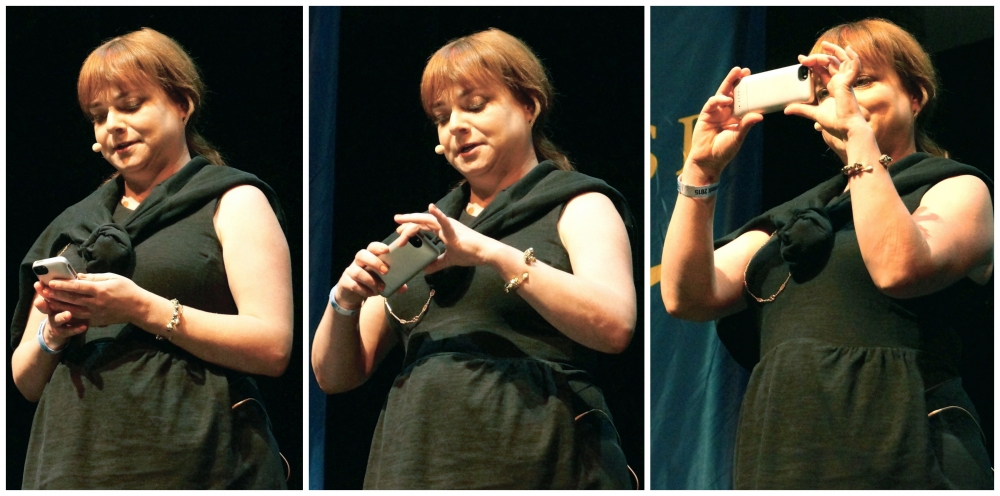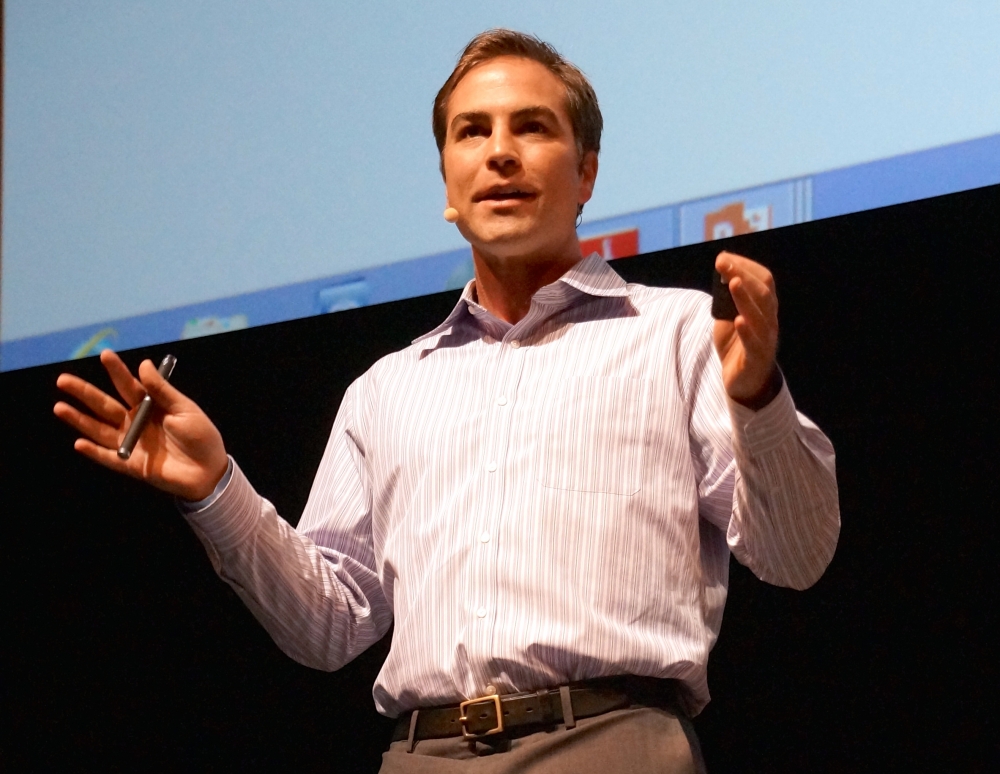A Sunny Forecast
Things are looking up, said Peter Rupert, chair of UC Santa Barbara’s Department of Economics and the executive director of the UCSB Economic Forecast Project (EFP), at the annual South Santa Barbara County Economic Summit Thursday, April 30. Speaking to an audience that filled the Granada Theatre in downtown Santa Barbara, Rupert presented the rundown of local and regional economic trends that are the staple of the UCSB EFP’s annual program.
Relative to where the numbers were for the local and regional economy in 2012, as well as since the Great Recession that began in 2007, values in the housing market — including foreclosures and house prices — in Santa Barbara County have improved but have yet to approach where they were during the pre-recession peak. The same is true for other indicators such as retail sales and the unemployment rate. Gross domestic product per capita and household income — both adjusted for inflation — already exceed what they were at the pre-recession peak.
“That means you’re rich,” he told the summit’s attendees, the movers and shakers of the local business and economic environment, “which is good.”
The recovery is evident, said Rupert. However, it’s still unclear whether it will look the way things were during the heyday before the recession. Financial regulations imposed as a result of the major economic downturn could hamper the regrowth of community banks and the businesses they serve.
Meanwhile, the picture of employment growth — the highest since 1997 to 2001 — reveals that the face of employment has shifted in Santa Barbara County. While government still remains the biggest employer, with almost 20 percent of total employment in the country, the professional and business services sector has overtaken the goods-producing sector as the second biggest source of jobs. Goods producing is now the fifth largest employment sector.
Despite the fatter numbers in employment growth, a closer look reveals that more jobs alone do not guarantee better quality of life for everyone.
“There are wage gains,” said Rupert. “They’re just not equally shared.” In fact, the newest jobs growth sector from 2012 to 2022 is expected to be in the area of farmworkers and labor; the largest-growing occupations are expected to pay less than $40,000 a year. “We’re going to create lots of bad jobs,” he said.
Coupled with Santa Barbara County’s status as the least affordable in the state when it comes to home prices and a recent spike in rental rates by 34.9 percent in Santa Barbara and 29 percent in Goleta, it might be difficult for some local residents to actually feel like things have improved. Additionally, earning power for those who have not obtained a bachelor’s degree or better has fallen in recent years.
Still, Santa Barbara County’s rebound continues to track with the rest of the state and the nation. Household net worths are at a high, stocks break records daily and the employment trends are positive, said Rupert. But, he added, there are risks worth considering in the coming months, including the rate at which the rest of the world recovers from the global recession, a potentially less-than-favorable GDP report and the response by the Federal Reserve, fluctuating oil prices and the drought that continues to squeeze California dry.
Rupert’s report was one of several presentations at the South County Economic Summit. Other speakers presented information relevant to small businesses, including keynote speaker Mark J. Flannery, chief economist and director of economic and risk analysis at the U.S. Securities and Exchange Commission. His discussion focused on capital formation for small businesses and the classification of an accredited investor.
After Flannery’s presentation, panelists Matt Kautz, director of social media and analytics at Walt Disney Studios, and Lisa Jenkins, vice-president of marketing and client services at The Marketing Distillery, weighed in with panel moderator Megan McArdle, Bloomberg View columnist, on the marketing element no small business can afford to ignore: social media.
“You can’t not think about this anymore,” said Jenkins, who with Kautz and McArdle provided insights into the use of social media to engage customers and spread a brand.
According to Kautz, Facebook remains the biggest social media platform, followed by YouTube and Twitter. All of the major social media sites, including favorites such as Instagram, Pinterest and Tumblr each offer advantages. Twitter, for instance, can reveal real-time attitudes of prospective customers while Pinterest functions like an online wish list. Snapchat and Tumblr are wildly popular among the younger set, although all social media platforms continue to be popular with those 34 and younger.
Jenkins offered several tips for would-be social media marketers. Among her suggestions would be to choose wisely among the platforms according to their strengths. Facebook has the broadest reach, for instance, while Twitter makes for easy conversations and Instagram lends more creativity to social media campaigns.
Additionally, she said, the outreach should be more authentic and empathic — the tone of a trusted advisor as opposed to a salesman with a megaphone — and the content should balance between the brand, the outside world and interaction with customers.
Diversification was another strategy the panelists emphasized. Dependency on a single platform could prove catastrophic if the platform were to change its algorithms, wiping out contact with followers or minimizing the message’s reach. On the other hand, a social media strategy has to be thorough and constant, so if time and energy to devote to such a strategy are scarce, fewer platforms might be better.
Fortunately for small businesses, there is more leeway to test, fail quickly and try again, said Jenkins, while larger companies are often subject to bureaucracy and the repercussions of large-scale mistakes. In this sense, she said, the smaller businesses have an advantage.
“You can enjoy, have fun and experiment,” she said.
The Economic Summit moves to North County next week on Friday, May 8. The event begins at 8 a.m. at the Radisson Hotel, 3455 Skyway Dr., Santa Maria.
